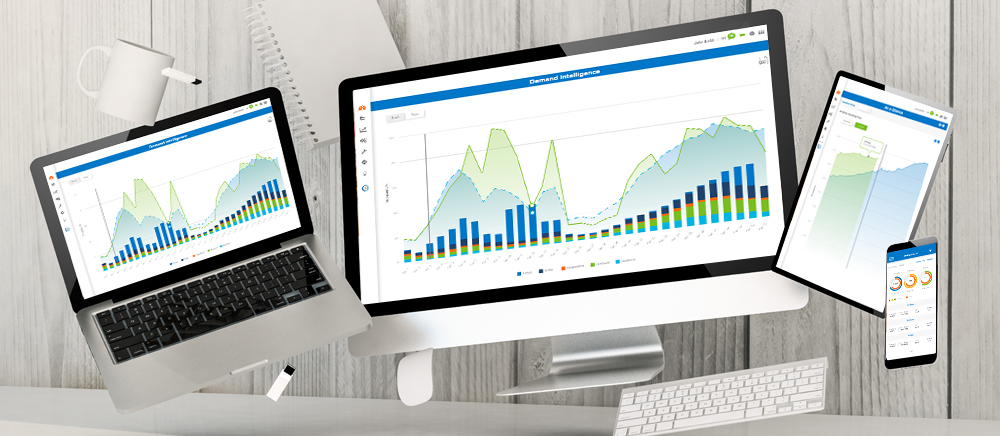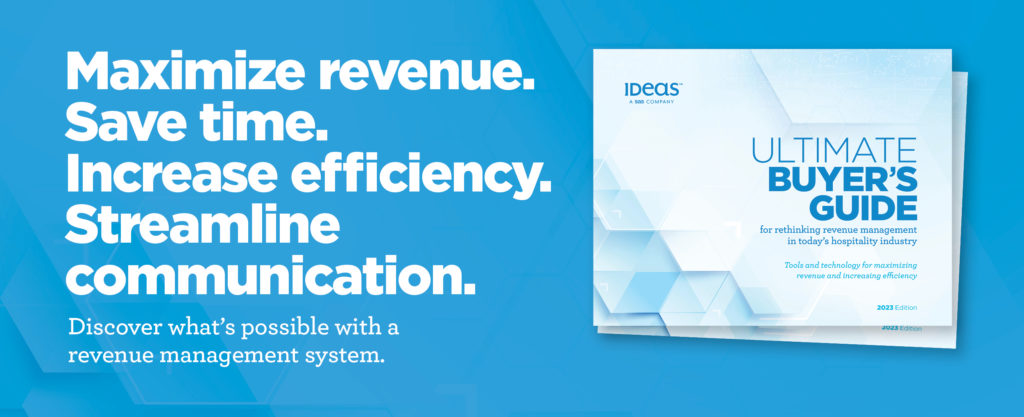When it comes to bringing in revenue, hotels typically rely on four primary sources: rooms, meetings and events, food and beverage, and ancillary services. In hospitality, typically, the performance of each pillar will determine a property’s financial success.
If you want to generate the largest revenue in your property, you need to understand how the four revenue drivers for hotels break down:
- Rooms: Providing a clean, safe, and comfortable space for people to sleep at night represents the functional backbone of a hotel. Whether rooms are being sold or left vacant is a significant indicator of the financial health of a hotel.
- Meetings and events: Whether you have a local business utilizing a conference room for a day, a wedding reception in one of your banquet halls, a full-week conference, or a tour group hosting a meal in between outings, meetings and event spaces can provide a massive source of revenue for hotels.
- Food and beverage: This category fills an array of offerings ranging from room service to in-property restaurants. If managed correctly, these outlets can substantially increase the property’s bottom line while offering a range of in-demand services and amenities.
- Ancillary: “Ancillary” equates to all other services—parking, spa, laundry, concierge services, etc. What falls under this category will depend on what offerings the hotel has have been made available.
It’s also worth noting that many hotels also rely on rent (to retail outlets), commissions from third-party vendors (like water sports and tours), and retail (like gift shops) for additional sources of revenue. While these sources of revenue technically don’t fall under “ancillary services” in the accounting books, they’re still worth noting.
Regardless, the four categories listed above generate the lion’s share of revenue a property typically earns.
So, what brings in the most revenue for hospitality organizations?
Of the four categories, rooms represent one of the lowest-hanging fruits for generating revenue.
It makes sense since most of the visitors to a hotel on a given day are staying in a room. Only some guests may participate in meetings and events, food and beverage, or ancillary services. Rooms often receive the highest return on investment since the overhead costs are the lowest.
Because rooms generate a high amount of revenue, it’s essential that hospitality organizations don’t leave important decisions like pricing to spreadsheets and manual information inputs. Relying solely on these methods can limit the profit potential for each room.
Utilizing a revenue management system (RMS)—like G3 RMS from IDeaS—allows your property to analyze a variety of circumstances to maximize revenue. These circumstances include supply and demand, local events, historical records, group size, and revenue stream type.
By taking a whole-picture view of how, when, and why your rooms are being reserved, you can determine more easily how to price rooms effectively. An RMS can also help you maximize profits from the other revenue streams as well.
To discover additional ways your business can generate more revenue, check out our top strategies featured in How to generate more revenue in a hotel: 6 easy tips.
So, where should you focus your resources?
Just because rooms generate a large amount of revenue doesn’t mean all your resources should be focused there.
A hotel with poorly kept rooms but a great bar won’t do well in the long run. Still, if you’re focusing all your energy on room revenue at the expense of exploring other revenue-driving opportunities, you’re leaving money on the table.
As we learned when COVID halted travel, hotels must diversify profit centers to attract a broader market, maintain revenue, and ensure stability in uncertain times.
The benefits of a strong meetings & events strategy
Although profits from meetings and events took a hit during the pandemic, it’s one service making a solid comeback. Humans have a strong natural need and desire to gather with one another, and conferences and meetings are central to many business sectors.
True, meetings and events will see changes as things return to a type of pre-COVID “normal,” but events are growing and projected to outpace 2019 levels.
As restrictions loosen, we already see event attendance at near-2019 levels.
Although it may not look like it did before 2020, ensuring your property’s event team considers how extra spaces can be used will increase your bottom line—from ballrooms to gardens and business centers.
An RMS can help you determine when and how your clients use your property so that your teams can direct marketing and promotional efforts toward increasing business from the most profitable segments.
The benefits of a strong food and beverage strategy
Your guests need to eat, so why not encourage them to eat at your property?
Hospitality properties have much more going for—and taking away from—their food and beverage strategy these days.
Today’s travelers are busy, so the addition of convenience stores in hotels has helped boost the bottom line for many businesses since they give visitors a chance to grab a snack while on the go.
Travelers these days also have more refined palates and are willing to travel for good food. In fact, the University of Central Florida points out that food tourists spend about 25% of their travel budget on food and beverages.
Properties willing and able to expand into a more robust food and beverage strategy gain an opportunity to tap into an opportunity for higher revenue.
A decade ago, ordering delivery was more labor-intensive than room service. Visitors were more likely to call down to a hotel’s kitchen—even if the menu was smaller and extra fees were tacked on—just to eat in their room.
Today, online ordering and delivery apps make purchasing from just about any place in town easy and cost-effective.
Providing room service that sets you apart from local dining options–whether through extended hours, menu items, or pricing– can help your property increase profits.
The benefits of a strong ancillary strategy
It wouldn’t be correct to say that a solid ancillary strategy leads to making money while you sleep, but it’s not far off. If your ancillary services require little-to-no employee oversight, like paid parking or setting a price for electric vehicle charging, your property can quickly turn up profits with little overhead.
Ancillary services offer your visitors a more inclusive experience. Although not everyone will take advantage of these services, those who do will be more likely to pay higher-than-average prices for convenience.
These services can also draw potential customers as part of a listing on booking sites or in your marketing materials. Even if the customer doesn’t opt for ancillary services at the moment, awareness that they could schedule a spa session after a long day or get dry cleaning in time for the big presentation could lead to choosing your location over another. It can also elevate your overall brand.
Thinking outside the box with ancillary services will do more than just boost your bottom line: it can set your property apart from the competition.
Some properties stock hard-to-find delicacies in their mini bars as visitors are likelier to pay more for those than more easily procured treats.
Other businesses employ local artists to decorate the property and individual rooms, providing guests with a “gallery” experience where they can take home their favorite pieces for a price.
Still, other hospitality organizations provide local events, outings, and entertainment that would be difficult for visitors to plan themselves.
Whatever the plan, a robust ancillary strategy can help your property stand out from the rest while making additional revenue.
Generate more revenue through advanced analytics
If your property has yet to switch to providing services in all four pillars, or you aren’t sure how these changes have impacted your bottom line, IDeaS can help.
As an industry leader that has helped more than 22,000 properties make more profitable decisions, we offer precise analytics, multi-property management functionality, and more to help you increase revenue from each source. Our software’s algorithm takes competitor influence and demand within your market into account so that you can build a more profitable pricing and services strategy.
Discover how our RMS solutions help our clients increase RevPAR, optimize business mix, and enhance productivity by checking out our client success stories.

